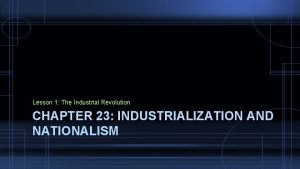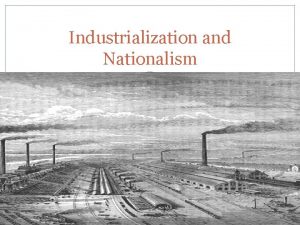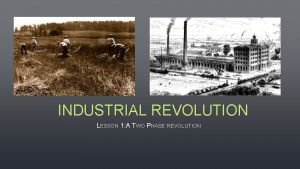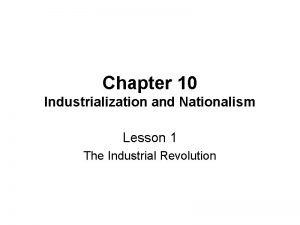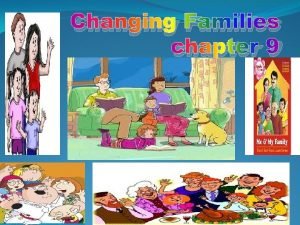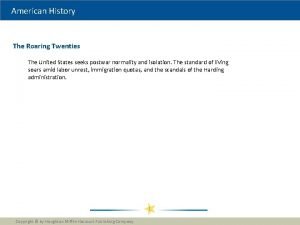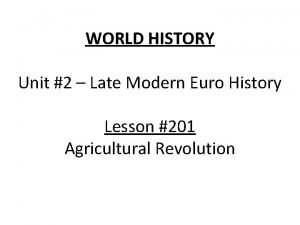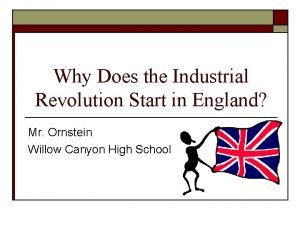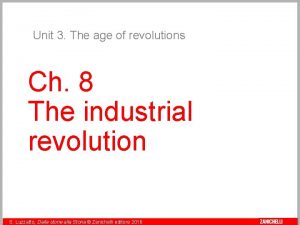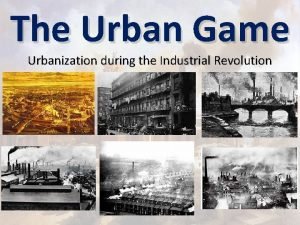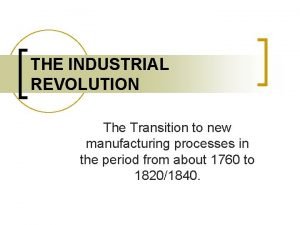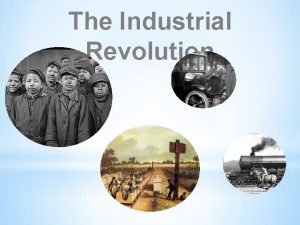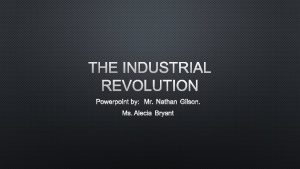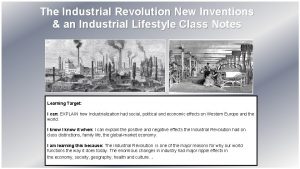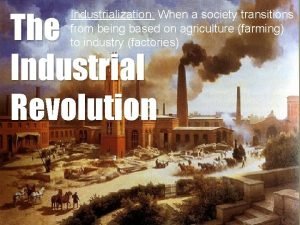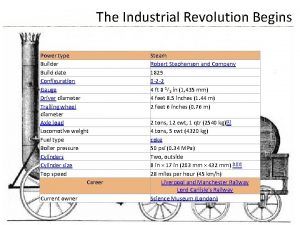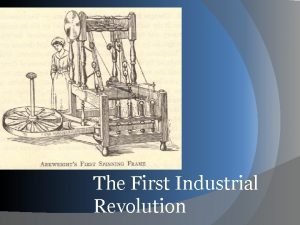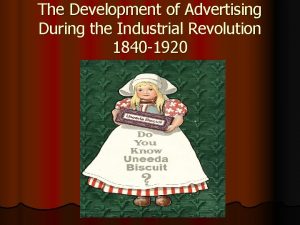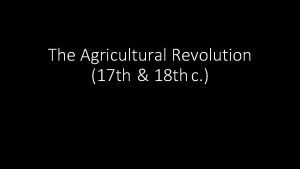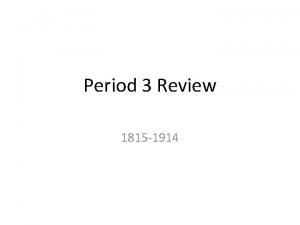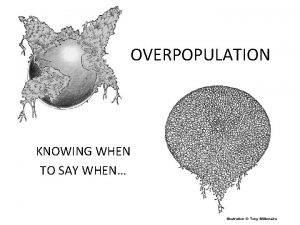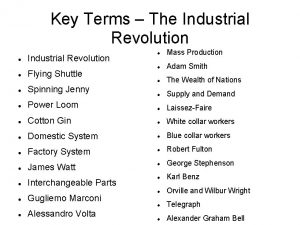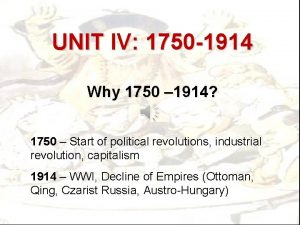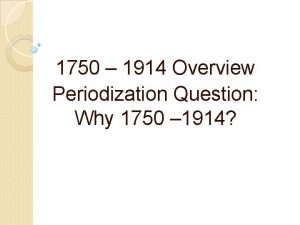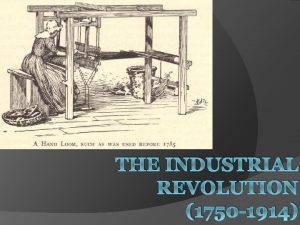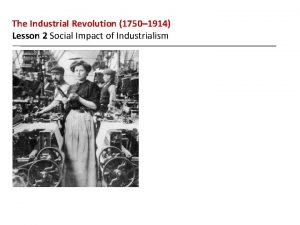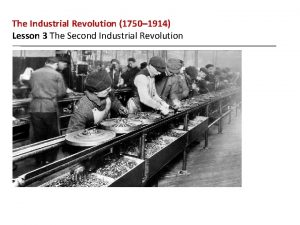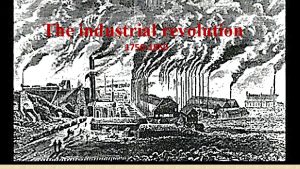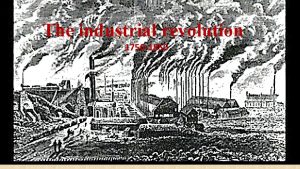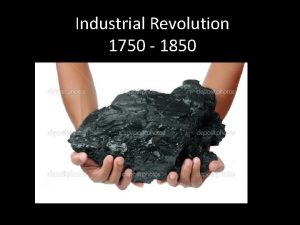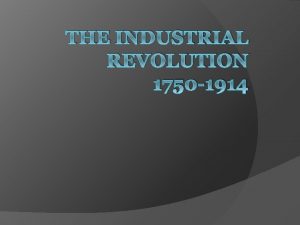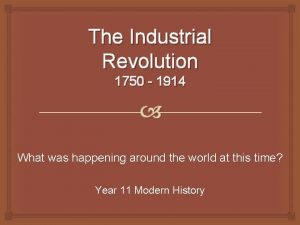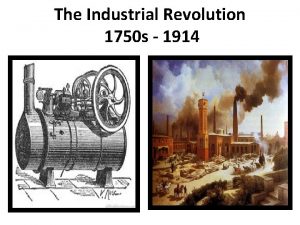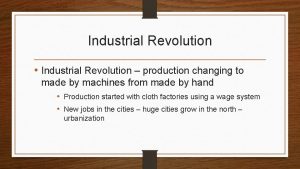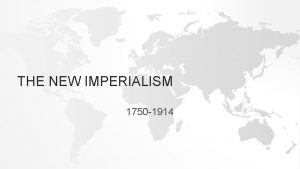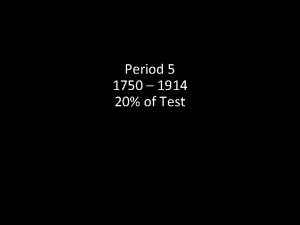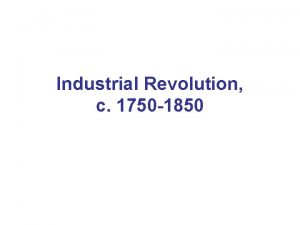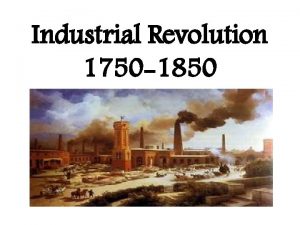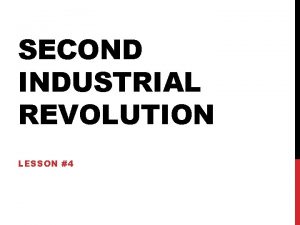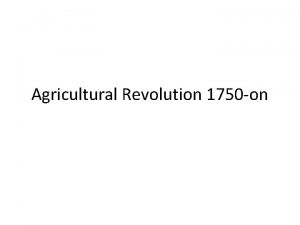The Industrial Revolution 1750 1914 Lesson 4 Changing


























- Slides: 26

The Industrial Revolution (1750– 1914) Lesson 4 Changing Ways of Life and Thought

The Industrial Revolution (1750– 1914) Lesson 4. 4 Changing Ways of Life and Thought; pg 244 Learning Objectives • • Identify what values shaped the new social order. Describe how the role of women changed in the Industrial Revolution. Explain the impact of education, new scientific ideas, and religion. Analyze how romanticism, realism, and impressionism reflected the culture of the Industrial Age.

The Industrial Revolution (1750– 1914) Lesson 4 Changing Ways of Life and Thought Key Terms • • • • cult of domesticity temperance movement, Elizabeth Cady Stanton, women’s suffrage, Sojourner Truth, John Dalton Charles Darwin. racism, social gospel, Romanticism William Wordsworth Lord Byron. Victor Hugo Ludwig van Beethoven. realism, Charles Dickens • • Louis Daguerre impressionism, Claude Monet Vincent van Gogh

The New Social Order The Industrial Revolution slowly changed the old social order in the Western world. For centuries, the two main classes were nobles and peasants. While middle-class merchants, artisans, and lawyers played important roles, they still had a secondary position in society. With the spread of industry, a more complex social structure emerged. Middle-class families lived in comfortable houses. Parlors like this one were filled with fine furniture, books, photographs, and decorative items to reflect luxury and respectability

The New Social Order The New Class Structure 1. 2. Middle Class Values 1. 2. The Ideal Home and Family 1. 2.

The Struggle for Women's Rights Some individual women and women’s groups protested restrictions on women's lives. They sought a broad range of rights. Across Europe and the United States, politically active women campaigned for fairness in marriage, divorce, and property laws. Women’s groups also supported the temperance movement, a campaign to limit or ban the use of alcoholic beverages. Temperance leaders pointed out that drinking threatened family life. They also argued that banning alcohol would create a more productive and efficient workforce. Some people called the temperance movement the Woman's Holy War. Analyze Images How does this image reflect that nickname?

The Struggle for Women's Rights: p. 245 The Campaign Begins 1. 2. The Suffrage Movement 1. 2.

The Rise of Public Education: p. 246 By the late 1800 s, reformers persuaded many governments to set up public schools and require basic education for all children. Teaching “the three Rs”—reading, writing, and ’rithmetic—was thought to produce better citizens. In addition, industrialized societies recognized the need for a literate workforce. Schools taught punctuality, obedience to authority, disciplined work habits, and patriotism. In European schools, children also received basic religious education. In Great Britain students attended primary school—called elementary school in the United States—until the age of 11. This page is from a schoolbook published in the 1870 s.

The Rise of Public Education Improving Public Schools 1. 2. Higher Education Grows 1. 2.

New Directions in Science in the service of industry brought great changes in the later 1800 s. At the same time, researchers advanced startling theories about the natural world. Their new ideas challenged long-held beliefs. This image shows Dmitri Mendeleyev's 1869 manuscript of the periodic table. In 1871, he created a version with gaps where he believed elements that had not yet been discovered would fit.

New Directions in Science: p. 247 Modern Atomic Theory 1. 2. The Question of Earth's Age 1. 2. Darwin’s Theory of Natural Selection 1. 2. The Uproar Over Darwin 1. 2. Social Darwinism 1. 2.

The Role of Religion: p. 248 Despite the challenge of new scientific ideas, religion continued to be a major force in Western society. Christian churches and Jewish synagogues remained at the center of communities. Religious leaders influenced political, social, and educational developments. *What Social services Did religious organizations provide? ________________________ ________________________ ________________________ ________________________ Define: Social Gospel _________________ _________________ List 3 areas of reform. 1. ________ 2. ________ 3. ________ The hardships of industrial life led to the creation of numerous charitable organizations, including the Salvation Army, which provided many services to the needy.

The Romantics Turn from Reason The Industrial Age shaped the arts as well as society and science. Many writers turned away from the harsh realities of industrial life to celebrate the peace and beauty of nature. These writers were part of a cultural movement called romanticism. Romanticism emphasized imagination, freedom, and emotion. (Romance, in the sense of romantic love, was not the focus of the movement. ) From the late 1700 s to 1850, romanticism shaped much of Western literature and arts. Romantic paintings often focused on nature and emotion. Note the romantic features of this portrait of William Wordsworth. His arms are crossed, and his head is down as though he is brooding about something. A dramatic landscape looms behind him.

The Romantics Turn from Reason Romantic Poetry 1. 2. Mysterious Heroes 1. 2. Glorifying the Past 1. 2. Romanticism in Music 1. 2. Romanticism in Art 1.

Artists Represent Real Life Novelists Expose Social Wrongs 1. 2. Realism on Stage 1. 2. Realism in Art 1. 2.

Artists Represent Real Life Social injustice was a focus of realism. In this illsutration from Charles Dickens's Oliver Twist, orphan Oliver asks for more porridge. Analyze Images How does the illustration help you understand the goals of the realist movement?

New Directions in the Visual Arts By the 1840 s, a new art form, photography, was emerging. Louis Daguerre (dah GEHR) in France and William Fox Talbot in England had improved on earlier technologies to produce successful photographs. At first, many photos were stiff, posed portraits of middle-class families or prominent people. Other photographs reflected the romantics’ fascination with faraway places. In 1839, Louis Daguerre perfected an effective method of photography. His camera changed both art and society.

New Directions in the Visual Arts The Impressionists 1. 2. The Postimpressionists 1. 2.

Quiz: The New Social Order How did the lives of middle-class women change during the Industrial Revolution? A. B. C. D. They spent more time buying items than producing them. They worked in professions such as medicine and law. They had more children and stayed at home. They worked longer hours than men.

Quiz: The Struggle for Women's Rights By 1900, women in Britain and the United States had not yet won the right to A. B. C. D. work outside the home. get an education. own property. vote.

Quiz: The Rise of Public Education Why had colleges and universities changed their curriculum by the late 1800 s? A. B. C. D. Companies and factories were demanding people who could read Latin. All jobs required people to read and write. More people were working in industries that required science and engineering skills. Women were now attending colleges.

Quiz: New Directions in Science Why was Darwin's theory controversial in the 1800 s? A. B. C. D. It challenged older views of the age of the Earth. It contradicted the biblical view of creation. It was used to condemn the actions of big business. It was considered unsound by most scientists.

Quiz: The Role of Religion How did religious groups respond to the challenges of industrialization? A. B. C. D. They taught women new skills. They found women and children jobs. They built new churches. They worked for reform and social services.

Quiz: The Romantics Turn from Reason What did romantic poetry, music, and art have in common? A. B. C. D. They stressed the importance and power of love. They stirred strong emotion and intense feelings in their audience. They sought to express social ills and offer ideas for reform. They appealed to their audience through logic and reason.

Quiz: Artists Represent Real Life What was the goal of realist writers and artists? A. B. C. D. to give the lower class hope and strength to provide suggestions for political reform to denounce all doctors and scientists to present reality and comment on social wrongs

Quiz: New Directions in the Visual Arts What was the goal of impressionist painters? A. B. C. D. to capture the eye's first impression of a scene to give readers a sense of unchanging reality to portray the harsh realities of life in cities to inspire people to celebrate beauty
 Lesson 1 the industrial revolution
Lesson 1 the industrial revolution Lesson quiz 10-1 industrialization and nationalism
Lesson quiz 10-1 industrialization and nationalism The industrial revolution lesson 1
The industrial revolution lesson 1 Industrialization and nationalism lesson 4
Industrialization and nationalism lesson 4 Russian revolution vs french revolution
Russian revolution vs french revolution You should hope that this game will be over soon
You should hope that this game will be over soon Definition of third agricultural revolution
Definition of third agricultural revolution What was the reason for change in nimmi's family
What was the reason for change in nimmi's family The roaring twenties lesson 3 changing ways of life
The roaring twenties lesson 3 changing ways of life Enclosure movement
Enclosure movement Why did the industrial revolution start in britain
Why did the industrial revolution start in britain The industrial revolution zanichelli
The industrial revolution zanichelli Urbanization board game
Urbanization board game Enclosure movement industrial revolution
Enclosure movement industrial revolution Long term impacts of the industrial revolution
Long term impacts of the industrial revolution Industrial revolution transition
Industrial revolution transition Industrial revolution quiz
Industrial revolution quiz Industrial revolution powerpoint
Industrial revolution powerpoint Negative effects of industrial revolution
Negative effects of industrial revolution The effects of the industrial revolution meme
The effects of the industrial revolution meme Enclosure movement definition industrial revolution
Enclosure movement definition industrial revolution 1st industrial revolution
1st industrial revolution Industrial revolution advertising
Industrial revolution advertising Enclosure movement
Enclosure movement Second industrial revolution
Second industrial revolution Thomas malthus overpopulation
Thomas malthus overpopulation How did the flying shuttle change the world
How did the flying shuttle change the world
